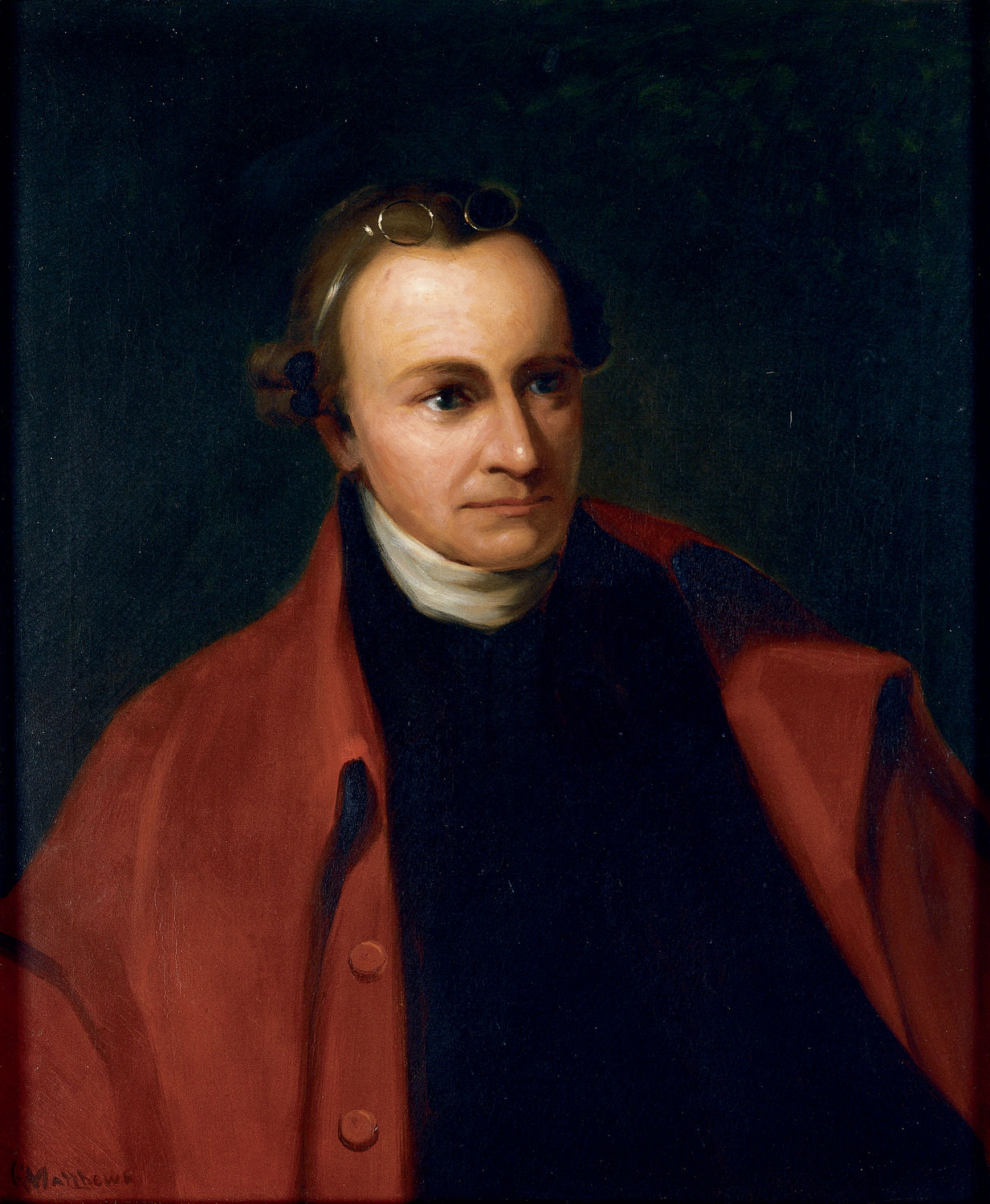
| Title | Patrick Henry |
| Artist/Maker | George
Bagby
Matthews
(
1857
-
1943
)
|
| Date | 1891 ca. |
| Medium | Oil on canvas |
| Dimensions | Sight: h. 29.5 x w. 24.625 in. (h. 74.93 x w. 62.5475 cm)
Framed: h. 43 x w. 38.25 in. (h. 109.22 x w. 97.155 cm) |
| Credit Line | U.S. Senate Collection |
| Accession Number | 31.00011.000 |
The earliest portraits of Patrick Henry appear to have been painted by the Sullys—Lawrence and his younger brother Thomas. Lawrence Sully’s 1795 miniature of Henry, thought to be a life study, passed down in the Henry family and is now owned by the Mead Art Museum of Amherst College in Massachusetts. In 1851 Thomas Sully painted a half-length portrait of Henry now owned by the Virginia Historical Society in Richmond; the Senate’s portrait by George Matthews is a copy of the Thomas Sully painting.
The documentary history regarding the Senate’s acquisition of the Henry portrait is incomplete. It likely was purchased by the Senate while Matthews was employed at the Capitol—intermittently over a 50-year period—as a painter and restorer of art. Yet, the earliest reference to the portrait does not appear until an 1891 letter from Architect of the Capitol Edward Clark to Librarian of Congress Ainsworth R. Spofford, which lists artwork owned by Congress. A 1926 anecdotal account adds Washington Post illustrator Barney Hughes to the circumstances surrounding the painting’s creation. Matthews and Hughes apparently shared a studio; Hughes was reported to have “touched up” the Matthews portrait of Henry, making it more acceptable to a disinclined acquisition committee.
Born in 1857 in Tappahannock, Virginia, Matthews studied in Paris in the early 1880s. In his American work, he concentrated on Southern historical figures. His portrait of John Paul Jones was acquired for the Capitol in 1890.
Patrick Henry was born in Hanover County, Virginia. Elected to the house of burgesses in 1765, he became a leader in Virginia's opposition to the Stamp Act. In 1775, as sentiment for independence rose, Henry addressed the second revolutionary convention of Virginia while its members debated putting the colony into a state of defense. His speech galvanized Virginians to appoint a militia, with Henry as its chairman. Forever after, Americans have remembered Henry for his courageous patriotism.
As the movement for independence grew, Henry served as a delegate to both the first and second Continental Congresses and was largely responsible for the establishment of a colonial militia. He helped draft a constitution for the new state of Virginia and served as its first governor from 1776 to 1779, when Thomas Jefferson succeeded him. After serving again as governor from 1784 to 1786, Henry was elected to the Constitutional Convention of 1787, but he declined to attend. At the Virginia ratifying convention, he opposed the federal Constitution, believing it to be a threat to state sovereignty. Subsequently, Henry was among those most responsible for adding a bill of rights to the Constitution, and with the bill's passage he gave his support to the amended Constitution. Returning to a successful law practice, Henry, in failing health, declined several federal appointments. At George Washington's request, he ran successfully for the Virginia house of delegates in 1799 but died before assuming office.